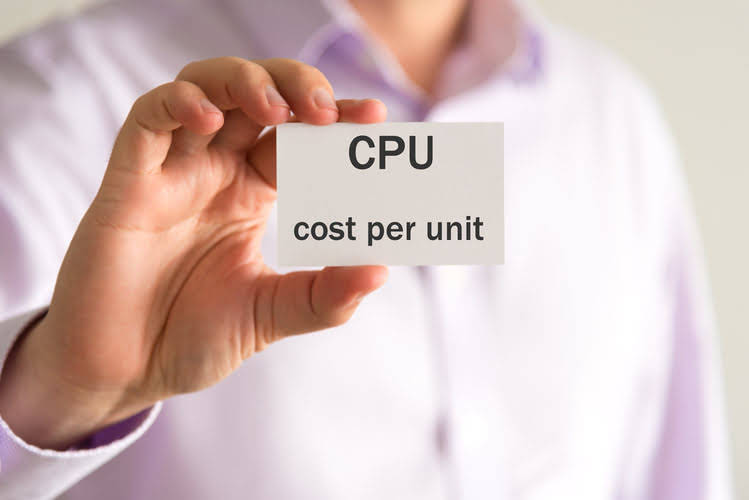Managing Miscellaneous Expenses in Finance
September 21, 2021

Organizing expenses by type or date can streamline the process during tax preparation. Digital tools can further simplify this task, allowing taxpayers to scan and store records electronically. Personal living costs, such as rent, groceries, and utilities, are explicitly excluded from miscellaneous deductions. For example, while a home office may qualify if it meets specific criteria, general home maintenance costs do not. Properly distinguishing between personal and business expenses reduces the risk of errors and potential penalties. Certain costs related to seeking employment in the same field examples of miscellaneous expenses may qualify as deductible expenses.

What are miscellaneous expenses in accounting?
These platforms often integrate with accounting software, streamlining the reconciliation process and enhancing financial transparency. Keeping a contingency buffer within the budget is essential for absorbing unexpected expenses. These expenses can include medical bills, prescriptions costs, medical equipment costs, insurance premiums, and miles driven for medical purpose. Payments to HSAs are also tax deductible if you itemize, regardless if you hit the 7.5% on other medical expenses. Rental lease payments, salaries, insurance, property taxes, interest expenses, depreciation, and possibly some utilities are all examples of fixed costs.
Review and Adjust Budget
- It also allows for greater transparency, as both employees and managers can see the status of each expense request in real-time.
- These expenses are not directly related to the primary business activities and can include various items such as office supplies, bank fees, or travel expenses.
- These expenses relate to costs incurred by employees while performing their duties that are not reimbursed by their employer.
- Under US GAAP, research and development costs are recorded as an expense in the accounting period in which they are incurred.
- By knowing what “miscellaneous expenses” mean in accounting, businesses can better make accurate budgets for their operations and ensure that every expense is properly accounted for.
- A growing SaaS startup, found their miscellaneous expenses climbing from 3% to 8% of total operating expenses during a rapid scaling phase.
An advertising agency regularly entertains clients to build and maintain strong working relationships. During a particularly busy quarter filled with pitches to prospective clients, the agency exceeds its client entertainment budget due to several last-minute dinner meetings at upscale restaurants. These additional costs are recorded as miscellaneous expenses because they are not fixed, recurring expenses in the agency’s financial planning. Business travel expenses—like flights, accommodation charges, dining costs, incidental expenses (such as baggage fees or tips), and ground transport—aren’t typically considered miscellaneous expenses. They’re usually categorized separately because they can constitute a significant portion of a business’s operational costs, especially for companies where travel is a frequent necessity. Businesses need to see these costs more clearly so that they can manage their money better.
Mobile Applications for On-the-Go Management
By recognizing and planning for these common types of miscellaneous costs, individuals and businesses can achieve greater financial stability and be better prepared to handle unforeseen expenditures. Keeping track of these expenses in a budget spreadsheet or financial management tool can provide insight into spending patterns and help prioritize financial goals. You probably know how much you are spending on food, clothes and housing, but what about miscellaneous expenses?
Miscellaneous Expenses: Examples, Payments and Expense Statements

Running a business comes with all kinds of costs, from payroll and rent virtual accountant to office supplies and software subscriptions. But what about miscellaneous expenses that don’t fit neatly into any specific category? While they may seem minor, these costs can add up quickly, and if not tracked properly, they can cause headaches at tax time. To begin, we will provide a clear definition of what miscellaneous expenses entail in the accounting context, accompanied by real-world examples to illustrate their practical application. This will lay the groundwork for a deeper exploration of the various types of miscellaneous expenses and how they are recorded, including the distinctions between operating and non-operating miscellaneous expenses.
Advertising and Marketing Costs

One of the important aspects that must be considered in this regard is miscellaneous expenses. As mentioned above, I wrote a similar post about budgeting miscellaneous expenses and included a free printable. It’s important to note that the deductibility of employee business expenses has been affected significantly by tax reforms, limiting many of these deductions to specific situations. Understanding what expenses do not qualify for miscellaneous deductions helps taxpayers avoid errors and ensures compliance with IRS regulations. Miscellaneous deductions can be a valuable aspect of tax planning, allowing taxpayers to reduce their taxable income by claiming certain expenses.
Managing Miscellaneous Expenses in Finance

Even though miscellaneous expenses may appear small, it’s essential to track them in detail. For instance, while office supplies like pens and paper may seem trivial, keeping records of these purchases will help ensure accuracy in accounting and tax reporting. One of the most effective ways to manage miscellaneous expenses is to budget for them. Businesses should set aside a specific portion of their budget for these unpredictable costs. This will allow for more flexibility in case unexpected costs arise while ensuring that spending remains under control.

- This type of budget is our favourite and is called a zero-based budget, where all the money has a home.
- Financial management often focuses on significant expenses that are easy to identify and track.
- Understanding the tax implications of miscellaneous expenses is essential for effective financial management.
- You can calculate depreciation expense by dividing the depreciable amount of an asset (i.e., cost minus its value at the end of its useful life) over its useful life.
- This means business owners and finance teams can monitor their spending patterns as they happen, rather than waiting for monthly or quarterly reports.
- Miscellaneous expenses aren’t inherently good or bad – they’re a necessary part of financial management.
- AP automation provides better tracking, enforces documentation requirements, surfaces spending patterns, and can suggest appropriate categorization based on historical data.
Taking proactive measures to anticipate and mitigate unanticipated expenses can prevent financial strain and enable a more sustainable financial position. They can include legal fees, audit fees, marketing expenses, professional development training, and travel costs. Companies may use different terms to refer to miscellaneous expenses, depending on the industry and context. Watch for growing miscellaneous expenses as a percentage of total spend, lack of detailed documentation, resistance to reviewing these payroll expenses, or repeated similar items appearing in the miscellaneous category. A manufacturing company faces sudden changes in industry compliance standards, necessitating immediate updates to its equipment to comply with new environmental regulations. The unplanned expenses for equipment modification are substantial but necessary and thus are allocated as miscellaneous expenses, as they are extraordinary and not part of the regular manufacturing costs.
Miscellaneous expenses encompass a broad range of non-recurring, variable costs that do not neatly fit into standard categories of financial accounting. These are the expenditures that arise outside the regular scope of operational costs or personal spending plans. They can include small-scale ad hoc purchases, such as office supplies, minor repairs, or impromptu business-related expenses. In personal finance, these might be unexpected outlays for household items or one-off entertainment expenses.

